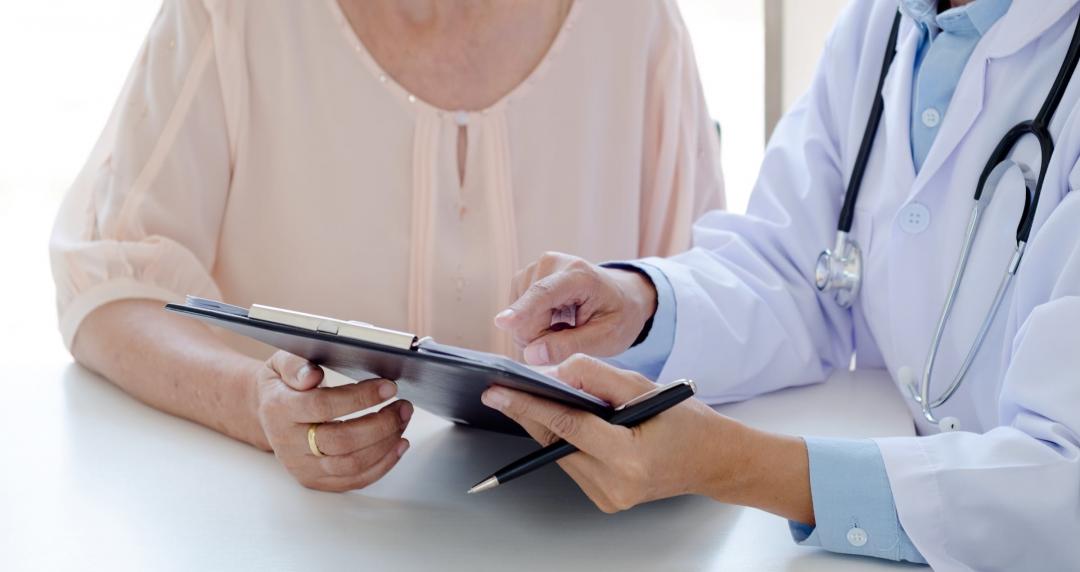For people with a new diagnosis of type 2 diabetes, it can come as a major shock.
Many don’t get the information they need to really grasp what is happening and know what to do about it. Let’s try to fix that with a quick primer about type 2 diabetes and what it means for your body.
Insulin and blood sugar
To understand type 2 diabetes, you first have to understand what insulin and blood sugar are. When you digest food, some part of that food is broken down into different sugars and drawn into your blood. That signals a hormone called insulin to get released. Insulin takes that sugar and moves it into your cells where it can be used for energy. There are multiple types of diabetes. All end up with your blood having too much sugar in it (high blood sugar). What makes the different types of diabetes (type 1, type 2, etc.) different is the reason why blood sugar is high. In type 2 diabetes, your body makes enough insulin but your cells are resistant to it. It’s like ignoring the knock of a delivery driver on your door. If the door doesn’t open, the package gets returned. In this case, your sugar packages are getting returned to your bloodstream. You might hear this talked about as insulin resistance. That term fits, right?
Why is high blood sugar bad?
We wrote a post about high blood sugar not too long ago, but there are two main reasons. First, it makes your blood more sticky. It’s like putting the wrong oil into your car. It’s harder to pump and it sticks to your circulatory system and heart. Second, the sugar in your blood can cause chemical reactions that damage your cells, including cells that do not repair easily or at all like nerve cells.
This is why type 2 diabetes can cause those scary complications you might have heard about (blindness, neuropathy, gastroparesis, etc.), and a host of other side effects. If your blood sugars stay too high for too long, this damage builds up, and some of it is irreversible. So it’s important to measure your blood sugar regularly and do everything you can to keep it at a healthy level. We know that’s a hard job and is easier said than done. Don’t worry, we’re here with you every step of the way to make it easier wherever possible.
Diabetic ketoacidosis
Type 2 diabetes can be a slow, sneaky thing that creeps up over a long period of time. Some people are actually diagnosed with type 2 diabetes when they go to the doctor for help with one of the complications – eye problems or maybe a wound on their foot that won’t heal right. Others might discover they have diabetes thanks to diabetic ketoacidosis or DKA. This is a nasty chain reaction of events and usually happens when your blood sugar gets really high. Basically, your cells run out of fuel and start breaking down proteins (a.k.a other body parts like muscles and stuff) for fuel. Remember the insulin resistance stuff we talked about above? Well, when the body starts burning alternate fuel sources, they can be converted into energy without the help of insulin – that’s a good thing, but there’s a drawback. It’s a “dirty burn” and produces byproducts that are dangerous if the body can’t eliminate them fast enough. One of those byproducts is called ketones.
You may be familiar with ketones if you know about the Keto or Atkins diets. In these super-low carb diets, the body switches over into ketosis, which means your body burns primarily fat for energy and produces a lot of ketones (which can be measured). That also explains why one of the symptoms of diabetes can be unexplained rapid weight loss (more common with type 1 diabetes). However, in DKA it’s happening far too quickly. Spilling ketones rapidly can cause acids to build up in the body that can’t be eliminated fast enough. DKA symptoms include extremely high blood sugar levels (over 300), excessive thirst and urination, nausea, vomiting, pain, shortness of breath, a distinct change in how your breath smells, and in extreme cases confusion or even loss of consciousness. This is an extremely serious condition and requires urgent medical attention.
What can you do about it?
In short, type 2 diabetes occurs when your cells stop responding properly to the insulin your body is producing. There are a lot of treatment options available and while it’s important to take a diabetes diagnosis seriously, there’s no reason to be afraid or intimidated. There are a lot of small steps you can take to get started in the right direction.
- Find a diabetes specialist. There are doctors called Endocrinologists who specialize in diabetes care. Depending on what you need, you may also be able to find a general practice or family doctor who specializes in diabetes. It’s important to find someone who can help you dig in and take charge because this person will work with you to find the right combination of diet, exercise, and medication (if needed) to get you on the right path.
- Start collecting blood sugar readings for you and your doctor to review. Here’s a helpful article on how to use the mySugr app to manage your diabetes. If you are having trouble affording enough test strips, or if your insurance won’t cover as many as you would like, think about the mySugr Bundle which offers unlimited strips.
- Work with a diabetes coach. Did you know that the mySugr Bundle also comes with unlimited access to a certified diabetes educator right in the mySugr app? They are a great source of information and education, especially as you get started in your diabetes journey. Here’s a helpful article on how to get started with mySugr Coach.
- Find some peer support. Connecting with others in your position can be a great help. There are many resources available with some quick searching on Google. A few active forums that come to mind are Diabetes Daily, TuDiabetes, and DiabetesStrong.
We’ll dive deeper into these topics (and more) in the future, so stay tuned. With quality education, the right team, the right tools, and some hard work, you can live a full and healthy life with type 2 diabetes.
The mySugr website does not provide medical or legal advice. mySugr blog articles are not scientific articles, but intended for informational purposes only.
Medical or nutritional information on the mySugr website is not intended to replace professional medical advice, diagnosis or treatment. Always consult a physician or health care provider with any questions you may have regarding a medical condition.





